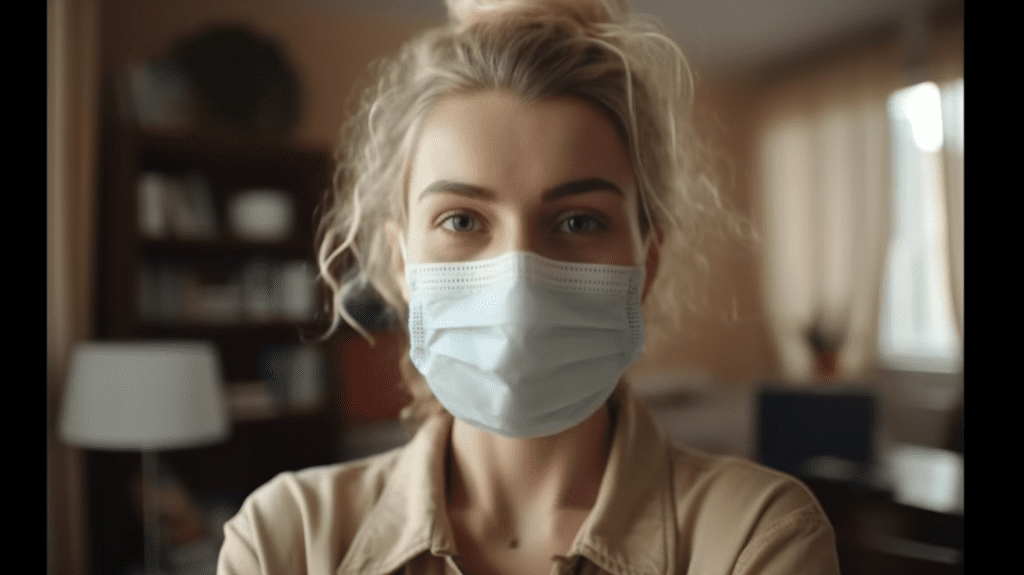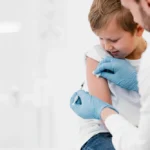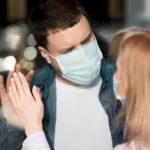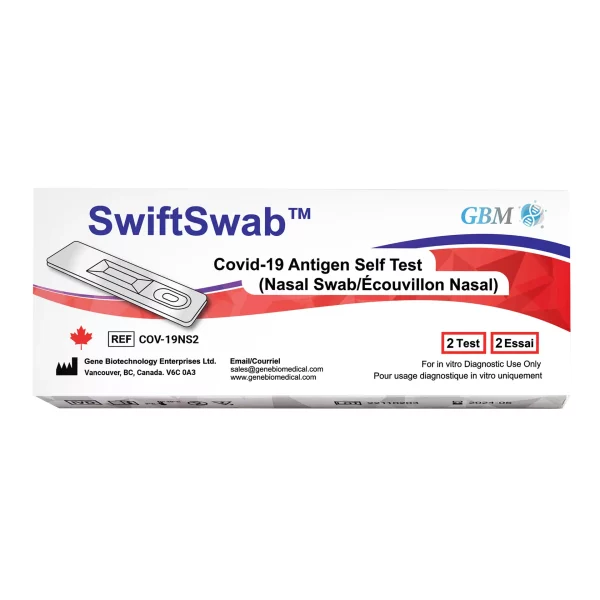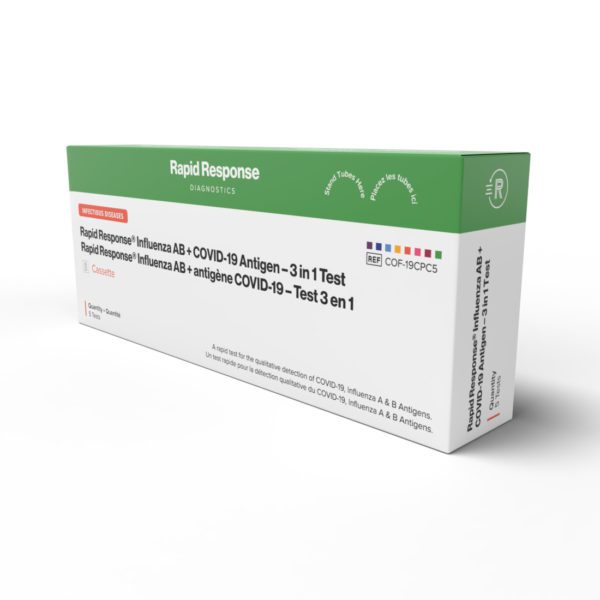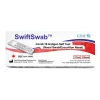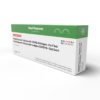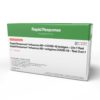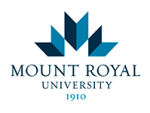Distinguishing between respiratory infections is crucial in understanding the appropriate course of action for effective care and prevention. Two common respiratory viruses, RSV (respiratory syncytial virus) and the flu (influenza), often share similar symptoms, making it challenging to discern between them. Both RSV and the flu can lead to severe illness, including respiratory complications, sore throat, and a runny nose. However, it is important to note that COVID-19, caused by the novel coronavirus, presents its own distinct set of symptoms and risks. This blog aims to provide clarity on the differences between RSV and the flu, helping individuals identify and respond to these respiratory illnesses with greater accuracy.
How are the Flu, COVID, and RSV different from a regular cold?

The Flu, COVID-19, and RSV differ significantly from a regular cold. While the common cold is usually mild and characterized by symptoms such as a runny or stuffy nose, sneezing, and a mild sore throat, the flu, COVID-19, and RSV are highly contagious respiratory infections that can cause more severe illnesses. During flu season, influenza viruses circulate widely and can result in intense symptoms including fever, cough, sore throat, muscle aches, fatigue, and difficulty breathing. COVID-19, caused by the SARS-CoV-2 virus, presents a unique range of symptoms that can vary widely, from mild respiratory symptoms to severe disease with complications like pneumonia and organ failure.
RSV primarily affects young children, starting with symptoms similar to a cold but can progress to more severe respiratory symptoms like wheezing and rapid breathing. Severe cases of RSV can require hospitalization, especially in infants and those with weakened immune systems. Vaccination is recommended to prevent the flu, with annual vaccines available for individuals aged six months and older. Vaccines for COVID-19 offer protection against severe disease and transmission.
However, no specific vaccine exists for RSV, and prevention relies on practicing good hand hygiene and avoiding close contact with infected individuals. If respiratory symptoms persist, worsen, or are accompanied by signs of severe illness, it is advisable to consult a healthcare professional for assessment and guidance to prevent complications and ensure a swift recovery.
Is there a way to tell if you have COVID, RSV, or the Flu?

Yes, there are certain factors that can help differentiate between COVID-19, RSV, and the flu. Here’s how you can distinguish between them:
COVID-19:
- Look for symptoms such as fever, cough, shortness of breath, loss of taste or smell, body aches, fatigue, and sore throat.
- COVID-19 has a higher likelihood of causing severe complications, such as pneumonia, acute respiratory distress syndrome (ARDS), and multi-organ failure.
- Testing for COVID-19 can be done through molecular (PCR) tests, rapid antigen tests, or antibody tests.
RSV (Respiratory Syncytial Virus):
- Pay attention to symptoms like runny nose, cough, sneezing, low-grade fever, wheezing, rapid breathing, and difficulty feeding or breathing, especially in infants and young children.
- RSV commonly affects infants and can lead to severe respiratory distress, such as bronchiolitis or pneumonia.
- Diagnosis of RSV can be confirmed through molecular (PCR) tests or antigen tests.
Flu (Influenza):
- Watch out for symptoms including fever, cough, sore throat, muscle aches, fatigue, headache, and nasal congestion.
- The flu is generally more prevalent during fall and winter seasons.
- Flu vaccines are available annually and recommended for individuals aged six months and older.
- Testing for the flu can be done through molecular (PCR) tests or rapid antigen tests.
It’s important to note that these guidelines provide general information, and a definitive diagnosis should be made by a healthcare professional. If you experience severe symptoms, difficulty breathing, or your condition worsens, seeking medical attention is advised to ensure proper evaluation and treatment.
What is COVID?
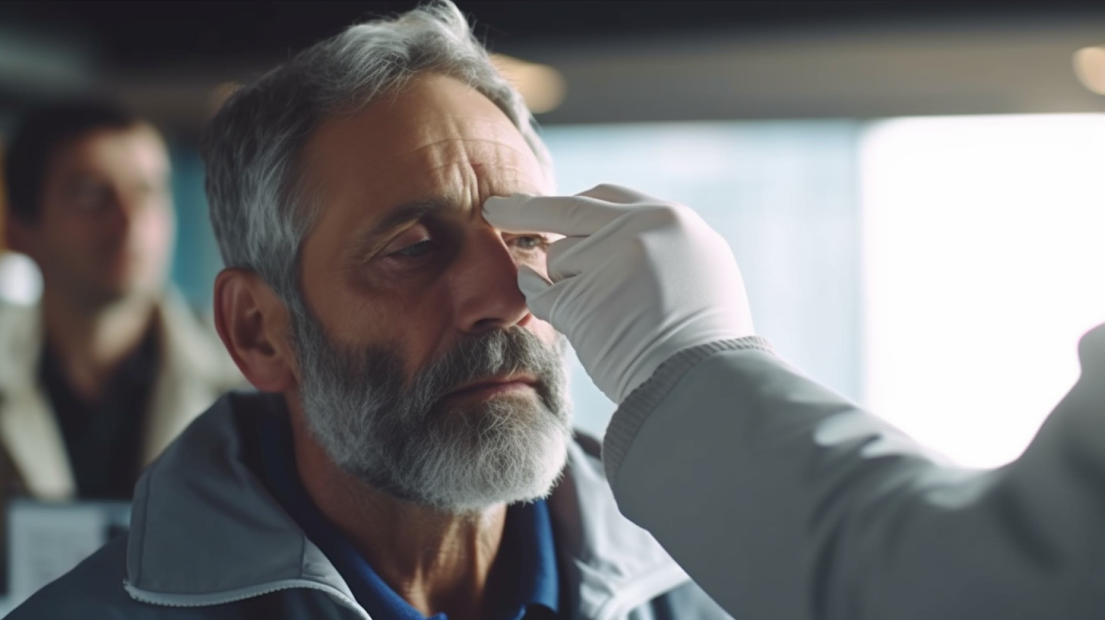
COVID-19, short for “Coronavirus Disease 2019,” is a highly contagious respiratory illness caused by the novel coronavirus SARS-CoV-2. It first emerged in late 2019 and quickly evolved into a global pandemic. COVID-19 has had a profound impact on societies worldwide, affecting public health, economies, and daily life. The virus primarily spreads through respiratory droplets when an infected person coughs, sneezes, talks, or breathes, making close contact a significant risk factor. COVID-19 can cause a range of symptoms, from mild to severe, including fever, cough, shortness of breath, loss of taste or smell, fatigue, and body aches. Understanding the nature of COVID-19, its transmission, and its impact is crucial in implementing effective preventive measures and managing its effects on individuals and communities.
What are the most common COVID symptoms?
The most common symptoms of COVID-19, as well as some differentiating factors from RSV and the flu, include:
- Respiratory Symptoms: COVID-19, RSV, and the flu can all cause respiratory symptoms such as cough, sore throat, runny nose, and difficulty breathing.
- Fever: Fever is a common symptom of COVID-19, the flu, and occasionally RSV infections, although it tends to be more prevalent in COVID-19 cases.
- Fatigue and Muscle Aches: Feeling tired, fatigued, and experiencing muscle aches are common symptoms seen in COVID-19 and the flu.
- Loss of Taste or Smell: An important distinguishing symptom of COVID-19 is the loss of taste or smell, which is rarely associated with RSV or the flu.
- Gastrointestinal Symptoms: While not as common, COVID-19 can also cause gastrointestinal symptoms like vomiting and diarrhea, which are less frequently observed in RSV and the flu.
- Severity of Illness: COVID-19 can range from mild symptoms to severe cases with complications, while severe cases of RSV and the flu are more common in infants, the elderly, and individuals with weakened immune systems.
- Age Groups Affected: RSV primarily affects very young children, while the flu can impact individuals of all ages. COVID-19 can affect people of all ages, but severe cases and complications are more prevalent in older adults.
It is important to note that these symptoms can overlap, and an accurate diagnosis should be made by a healthcare provider. Rapid tests and laboratory tests can help differentiate between COVID-19, RSV, and the flu, ensuring appropriate medical care and disease control measures are implemented.
Should you get tested?
Determining whether you should get tested depends on several factors. If you experience very high fever, severe symptoms, or have difficulty breathing, seeking immediate medical attention is essential. Consulting with a healthcare provider can help assess the need for testing based on your symptoms and medical history. While testing is crucial for diagnosing COVID-19, RSV, and the flu, it is important to note that not everyone with symptoms will require testing. For older children and individuals with lung conditions, such as small airways, testing may be recommended to accurately identify the underlying respiratory illness and guide appropriate treatment. Ultimately, the decision to get tested should be made in consultation with a healthcare professional.
What COVID tests are available?
There are several COVID-19 tests available to detect the presence of the SARS-CoV-2 virus. These tests include:
- Molecular (PCR) Tests: This is the most common and reliable type of COVID-19 test. It detects the genetic material of the virus and can accurately identify an active infection. Molecular tests are conducted using samples collected from the nose or throa
- Antigen Tests: Antigen tests are rapid tests that detect specific proteins from the SARS-CoV-2 virus. They provide quick results within minutes, but they are generally considered less sensitive than molecular tests. Antigen tests are also conducted using samples collected from the nose or throat.
- Antibody Tests: Antibody tests are used to detect the presence of antibodies produced by the immune system in response to a previous COVID-19 infection. These tests can help determine if a person has had COVID-19 in the past, but they are not typically used for diagnosing an active infection.
It is important to consult a healthcare professional for guidance on which test is most appropriate based on your symptoms, medical history, and the prevalence of COVID-19 in your area. Additionally, testing for RSV and the flu can be performed using similar molecular or antigen-based methods to identify the presence of these specific viruses.
What is RSV?
RSV, or Respiratory Syncytial Virus, is a viral infection that primarily affects the respiratory system. It is different from the flu and other respiratory viruses. RSV is more common during the cold and flu season, typically in fall, winter, and early spring. It can cause symptoms similar to the common cold, such as runny nose, cough, sneezing, and low-grade fever. However, RSV can lead to more severe illness, especially in infants and young children, causing respiratory distress, wheezing, and difficulty breathing. Unlike the flu, there is no specific vaccine available for RSV at the time of writing. If RSV infection is suspected, it is advisable to consult a pediatric infectious disease specialist for appropriate evaluation and management.
What are the most common RSV symptoms?
The most common symptoms of RSV (Respiratory Syncytial Virus) include:
- Cold-like Symptoms: Runny nose, congestion, sneezing, and sore throat, similar to the symptoms of a common cold or flu.
- Cough: Persistent coughing, often accompanied by phlegm or mucus production.
- Breathing Difficulties: RSV can cause wheezing, rapid or shallow breathing, and shortness of breath, especially in infants and young children.
- Fever: Some individuals with RSV may experience a low-grade fever, although it is not always present
- Fatigue and Body Aches: Generalized fatigue, tiredness, and muscle aches are common with RSV infections.
- Poor Feeding: Infants with RSV may have difficulty feeding or show a decreased appetite.
It is important to note that these symptoms can overlap with other respiratory illnesses, such as the flu or common cold. RSV symptoms can range from mild to severe, and in some cases, especially in infants or individuals with underlying medical conditions, RSV can lead to more serious respiratory complications. Seeking medical attention and consulting with a healthcare provider is crucial for accurate diagnosis and appropriate management of RSV infections.
Should you get tested?
Determining whether you should get tested for RSV depends on several factors. If you or your child are experiencing symptoms such as cold-like symptoms, persistent coughing, breathing difficulties, or poor feeding, it is advisable to seek medical attention. A healthcare provider, particularly a pediatric infectious disease specialist, can assess the need for testing based on the severity of symptoms, age, medical history, and other risk factors. RSV testing can help confirm the presence of the virus and guide appropriate treatment. Additionally, if you or your child have underlying medical conditions, such as lung diseases, or if symptoms worsen or persist, testing may be recommended to ensure accurate diagnosis and appropriate care. It is important to consult with a healthcare professional for personalized guidance regarding RSV testing.
What RSV tests are available?
There are several tests available to detect RSV (Respiratory Syncytial Virus) infections. These include:
- Molecular (PCR) Tests: These tests detect the genetic material of the RSV virus in respiratory samples. PCR tests are highly sensitive and specific for diagnosing RSV infections. They are commonly used in clinical settings and provide accurate results.
- Antigen Tests: Antigen tests detect specific proteins from the RSV virus in respiratory samples. They provide rapid results, usually within a short period of time. However, antigen tests may have slightly lower sensitivity compared to PCR tests.
It is important to note that the availability of specific tests may vary depending on the healthcare setting and region. Healthcare professionals, including pediatric infectious disease specialists, can recommend the most appropriate test based on individual circumstances, symptoms, and patient demographics. Proper testing helps in accurate diagnosis, appropriate treatment, and preventive measures to limit the spread of RSV infections.
What is the flu?
The flu, also known as influenza, is a contagious respiratory illness caused by influenza viruses. It is characterized by symptoms such as fever, cough, sore throat, runny or stuffy nose, muscle or body aches, fatigue, and sometimes vomiting or diarrhea. The flu typically spreads during the fall and winter months, leading to seasonal outbreaks known as flu seasons. Influenza viruses can cause mild to severe illness, and certain populations, such as young children, older adults, and individuals with underlying health conditions, are at higher risk of developing severe complications from the flu. Vaccination with flu shots is recommended as a preventive measure to reduce the risk of flu infection and its associated complications.
How do I prevent the flu, COVID-19, and RSV?
To prevent the flu, COVID-19, and RSV (Respiratory Syncytial Virus), you can follow these preventive measures:
Vaccination:
Stay up to date with recommended vaccinations. Get the annual flu vaccine to protect against the circulating strains of influenza. As of my knowledge cutoff in September 2021, there was no specific vaccine available for RSV, but consult with healthcare professionals for the latest information. Additionally, follow local guidelines regarding COVID-19 vaccinations.
Hand Hygiene:
Wash your hands frequently with soap and water for at least 20 seconds. If soap and water are not available, use an alcohol-based hand sanitizer containing at least 60% alcohol.
Respiratory Etiquette:
Cover your mouth and nose with a tissue or your elbow when coughing or sneezing. Dispose of used tissues properly and wash your hands afterward. Avoid touching your face, especially your eyes, nose, and mouth.
Physical Distancing:
Maintain a safe distance from others, especially if they are coughing, sneezing, or showing respiratory symptoms. Follow local guidelines on physical distancing, which may vary depending on the prevailing situation.
Mask Usage:
Wear a mask in public settings, especially when physical distancing is challenging or required by local regulations. Follow the guidance provided by health authorities regarding the type of mask and its proper usage.
Cleaning and Disinfection:
Clean and disinfect frequently touched surfaces, such as doorknobs, light switches, and electronic devices, regularly using appropriate disinfectants.
Avoid Close Contact:
Limit close contact with individuals who are sick or showing symptoms of respiratory infections. If you or someone in your household is ill, try to isolate and take necessary precautions to prevent transmission.
Stay Home When Sick:
If you are experiencing symptoms of any respiratory illness, including fever, cough, or difficulty breathing, stay home, and avoid close contact with others. Seek medical advice and follow the guidelines provided by healthcare professionals.
Remember that guidelines and recommendations may vary based on local public health authorities and the current status of the pandemic. Stay informed and follow the advice provided by reliable sources such as the Centers for Disease Control and Prevention (CDC) or the World Health Organization (WHO).
In summary, distinguishing between COVID-19, RSV, and the flu can be challenging due to the overlapping respiratory symptoms they share. However, it is crucial to seek medical attention and get tested if you experience severe symptoms, particularly difficulty breathing or other serious respiratory issues. Understanding the differences between these infections and their common symptoms can help in making informed decisions about testing, treatment, and preventive measures. Vaccination, practicing good hand hygiene, following respiratory etiquette, maintaining physical distancing, and staying home when sick are key preventive measures to reduce the risk of contracting and spreading these respiratory illnesses. By staying informed, following public health guidelines, and seeking medical advice when needed, we can collectively work towards minimizing the impact of these infections and safeguarding our health and the well-being of our communities.
